I’d long been fascinated with IR (infrared) photography. My interest was based on the fact that the results produced were unique with their blue/pink colour tones and the potential for strong contrast black and white photographs. After doing my research and considering my options (some expensive, some cheaper) I decided to pick up an IR converted camera to have a bit of a play with the style and see how much I liked it. The smart choice was not to spend too much, since there’s absolutely no guarantee that I’d like it, or be good at it, or find it worthwhile as a photographic art form.
My decision, amongst the plethora of options, was to choose a simple and straight forward camera that would allow me to focus (heh!!) on the IR photography and not get overloaded with learning a new method or system or other distractions that come with buying cameras that are unfamiliar to my shooting style. I ended up buying the Lumix G3 – my first foray into M43rds cameras which I was ultimately very a happy with. It’s a compact and easy to use camera that produces nice, high quality images. The camera had been converted to IR (by removing the infrared filter element) and needed to be paired with an IR filter, that would live on the lens, that would produce the IR results that I was looking for. Since IR photography lends itself more to landscape, wider angle images, I bought the DJI 15mm f1.7 lens. To complete the set, I added two (essential) IR lens filters – a 720nm and 850nm filter. The 720nm would produce the gorgeous blue/pink style of images that I was looking for with IR photography. The 850nm filter would be required for exclusively black and white images.
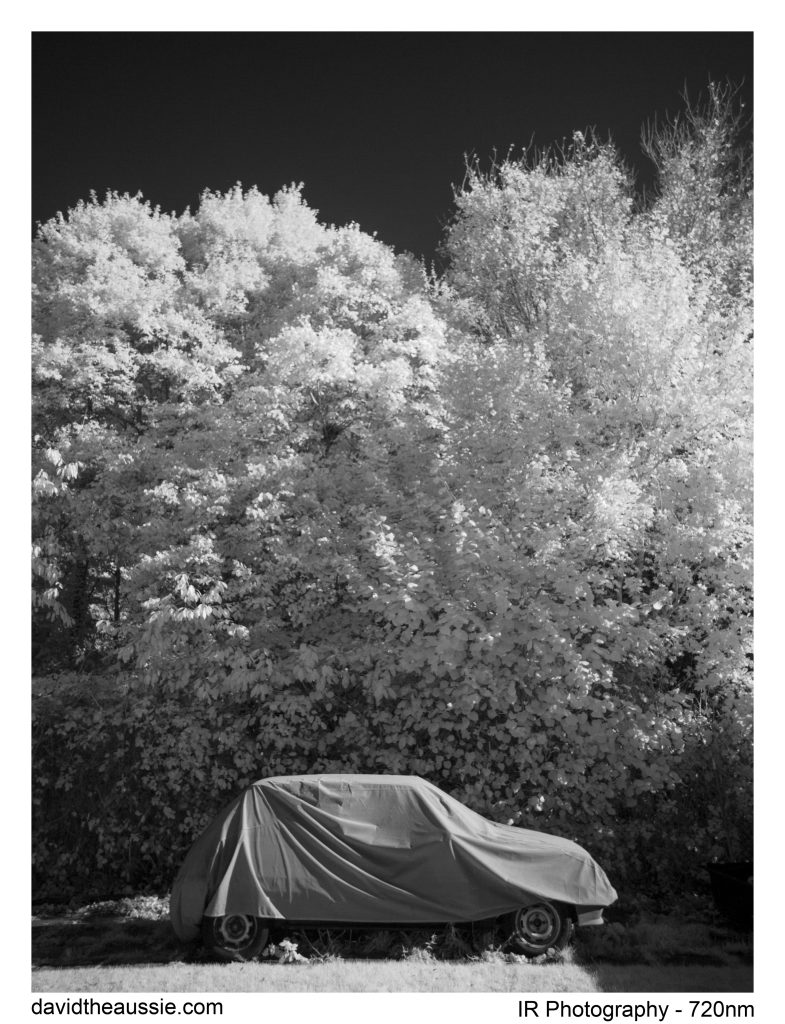
A few test images with the 720nm filter which had arrived earlier than the 850nm filter (damn things are harder to get at the lens diameter I was using).
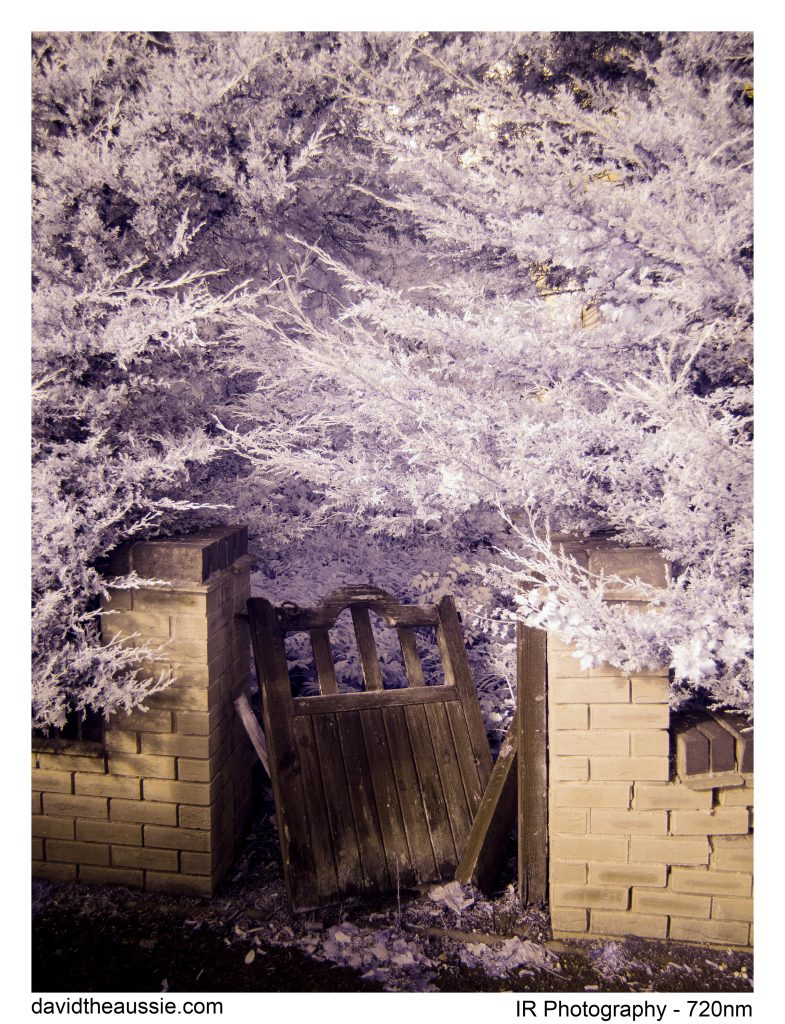
I was pleasantly surprised with the results. I was still learning to deal with colour profiles, white balance and red/blue colour switching … but as an experiment it was a bunch of fun.
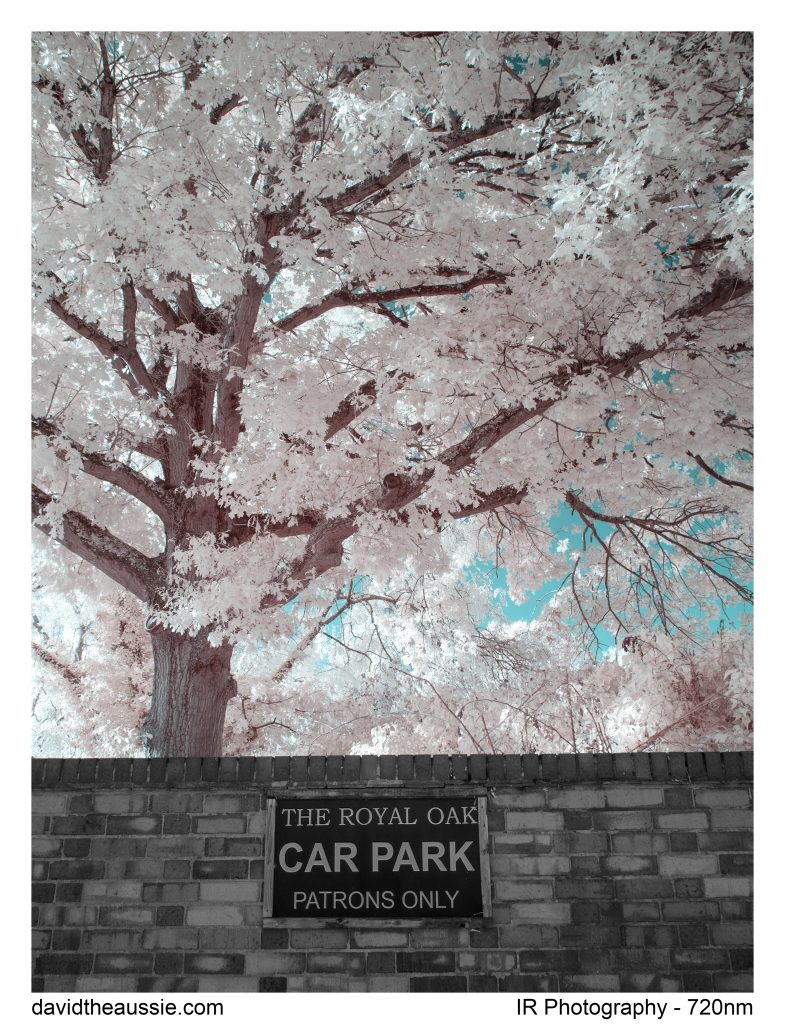
My initial test shots, prior to my Thailand trip, were a bunch of fun and I was enjoying the results.
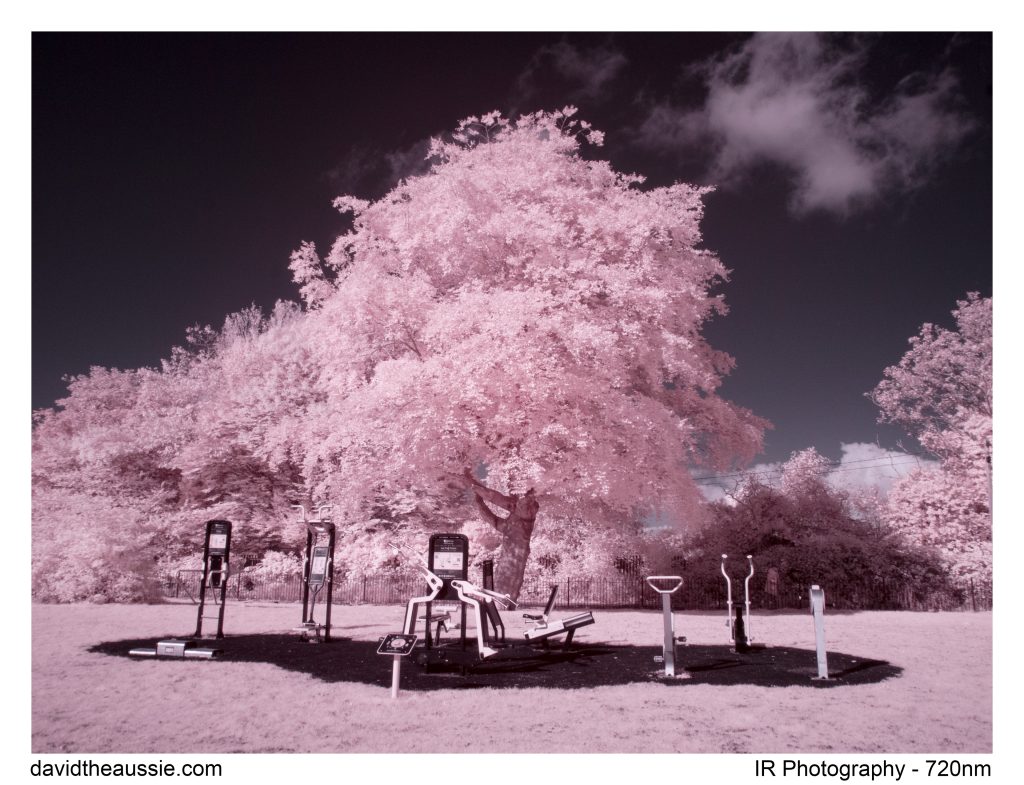
I was also learning the limitations of the equipment and what the G3 camera was capable of achieving.

A few hits and misses were inevitable, and I quickly discovered that the camera struggled to find a focal point due to the removal of the internal IR filter and the addition of IR lens filters. But working within the limitations of the camera, and the fun of experimenting with the results in photoshop as part of my post-processing workflow, I enjoyed the results a lot. This final shot (above) was one I enjoyed enormously. I was happy with where I was at … and it was off to Thailand for two weeks of fun and photography.
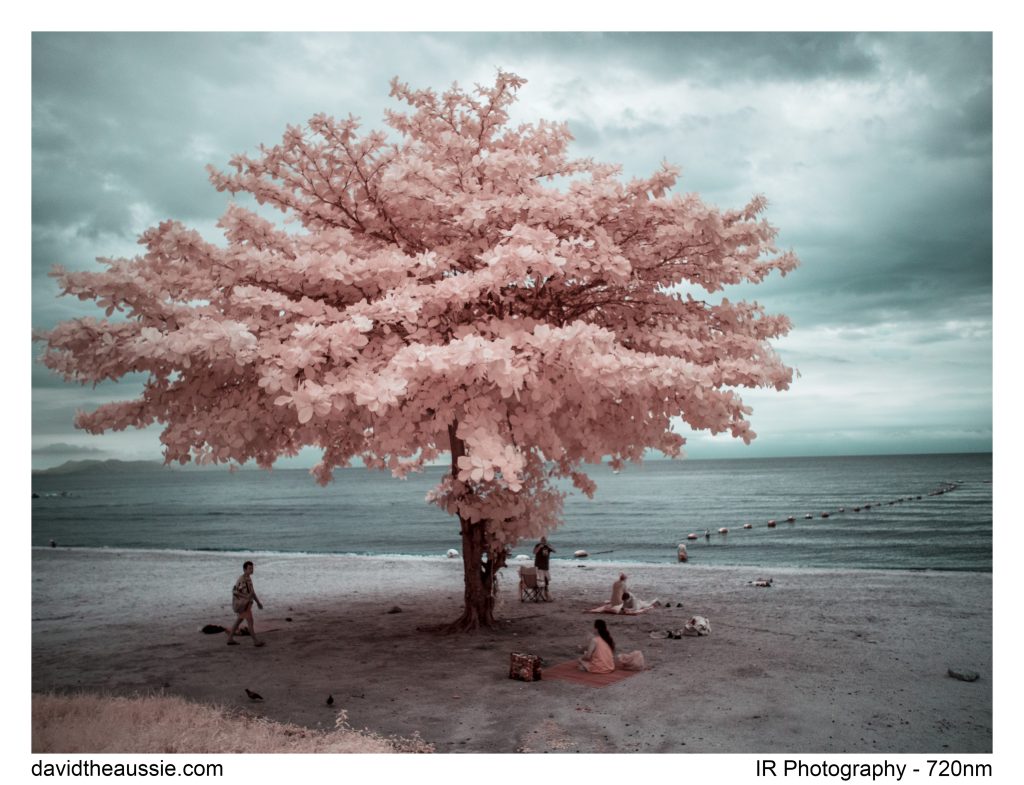
Light was not the problem it usually is for photographers. Shooting in the harsh midday sun (in a ‘close to the equator’ country) became part of the enjoyment of the day’s shoot and not to be avoided as it was with more traditional photography.
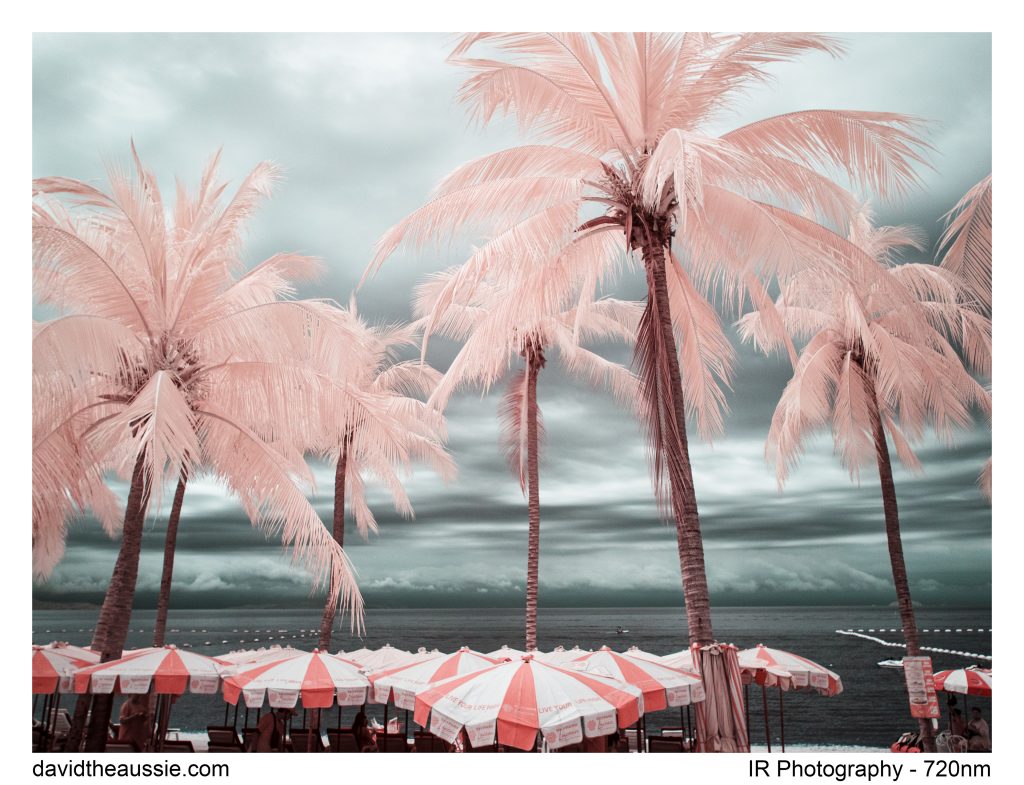
Leaves and trees turned white, tree trunks became darker. Water became black and skies showed incredible contrast.
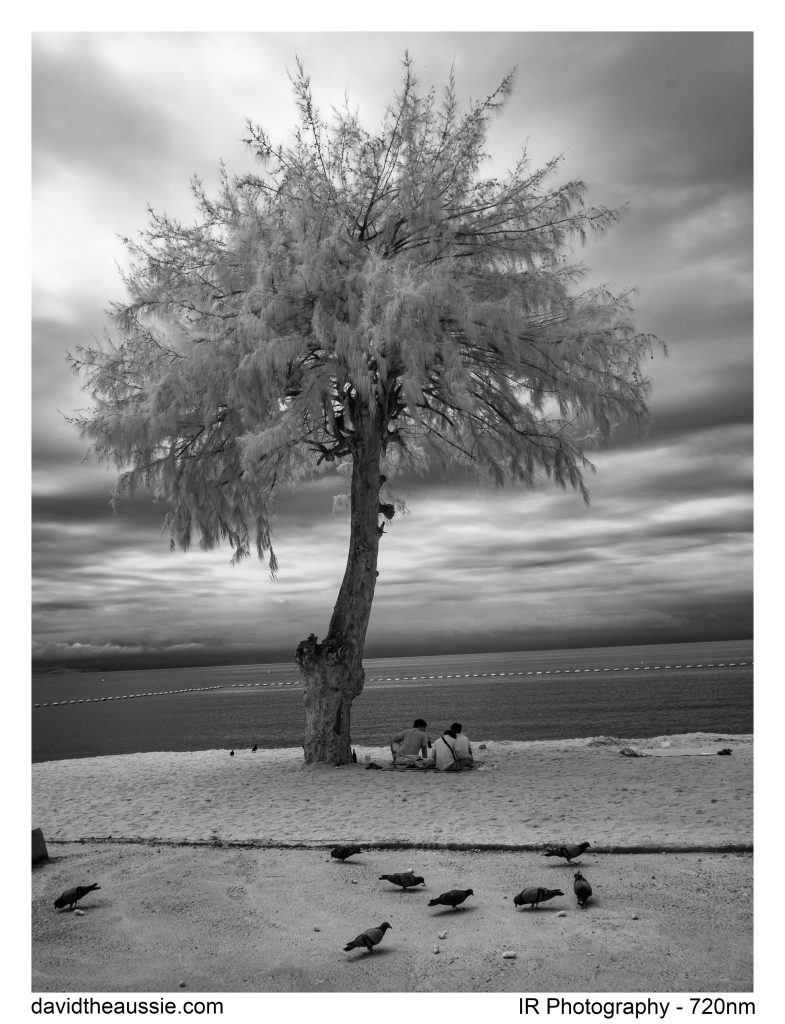
It wasn’t all blue/pink hues. I soon discovered that black and white became amazing, high contrast atmospheres … even if the horizon wasn’t balanced!
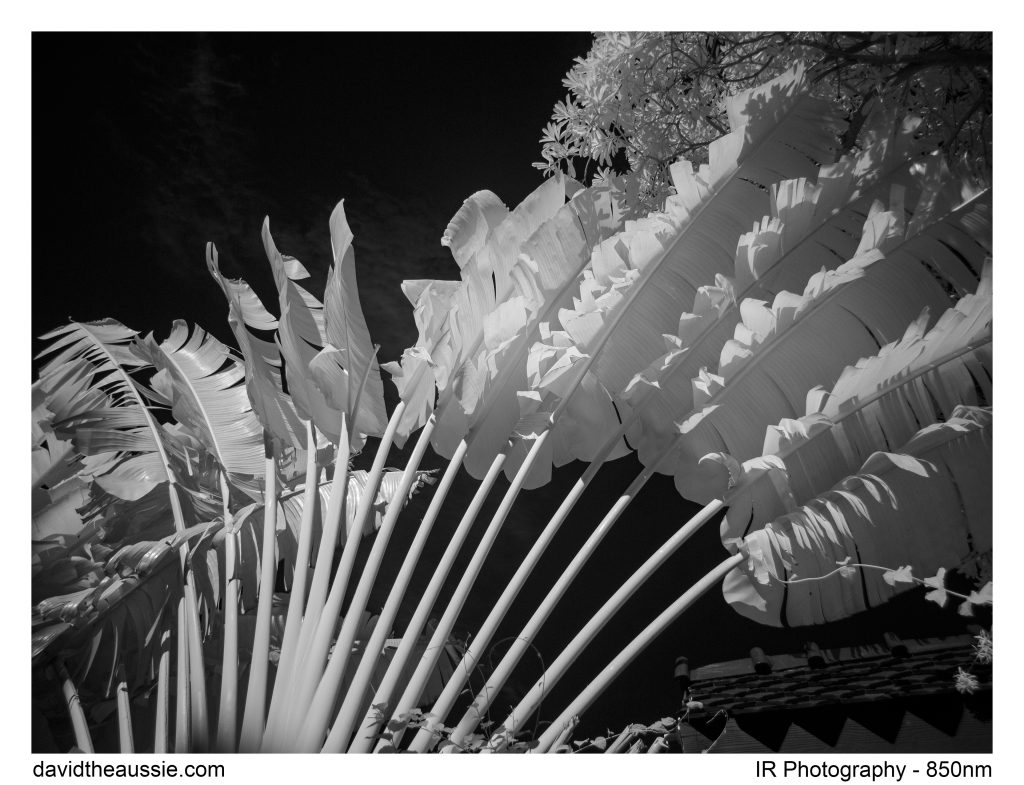
This shot really does demonstrate the unique reverse of colours … it’s a colour tone used famously in the recent Dune 2 movie to achieve a unique, ethereal or ‘other worldly’ result…
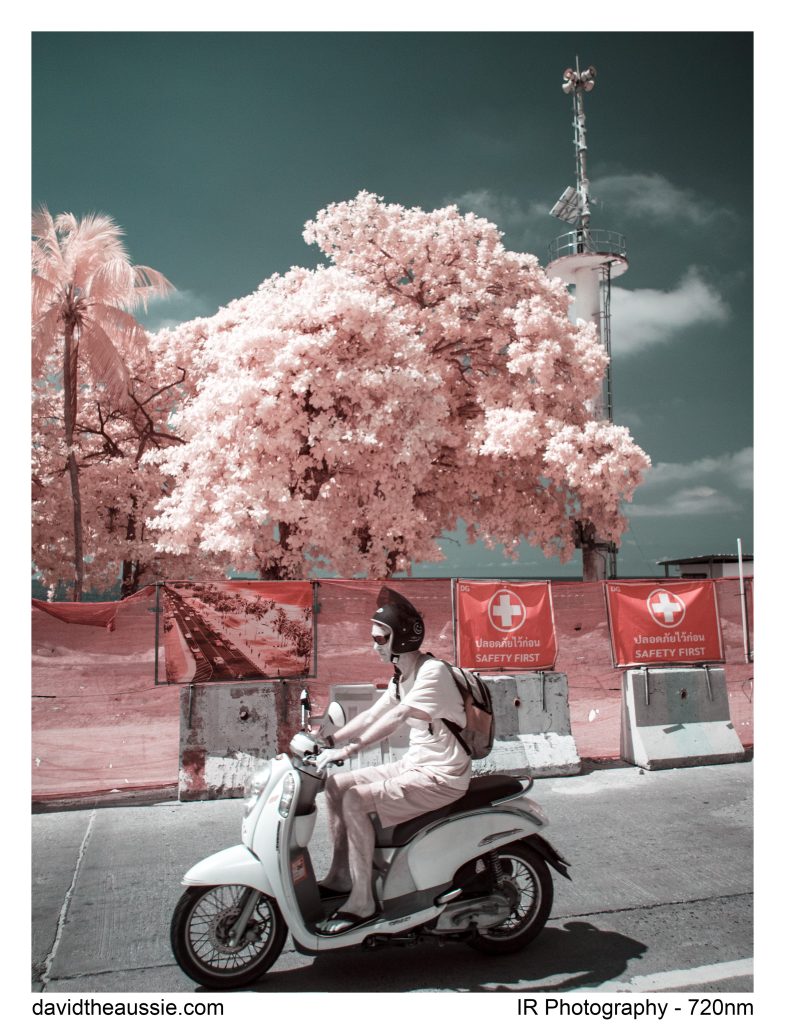
Of course, I found the blue/pink colour tones to be both aluring and visually striking.
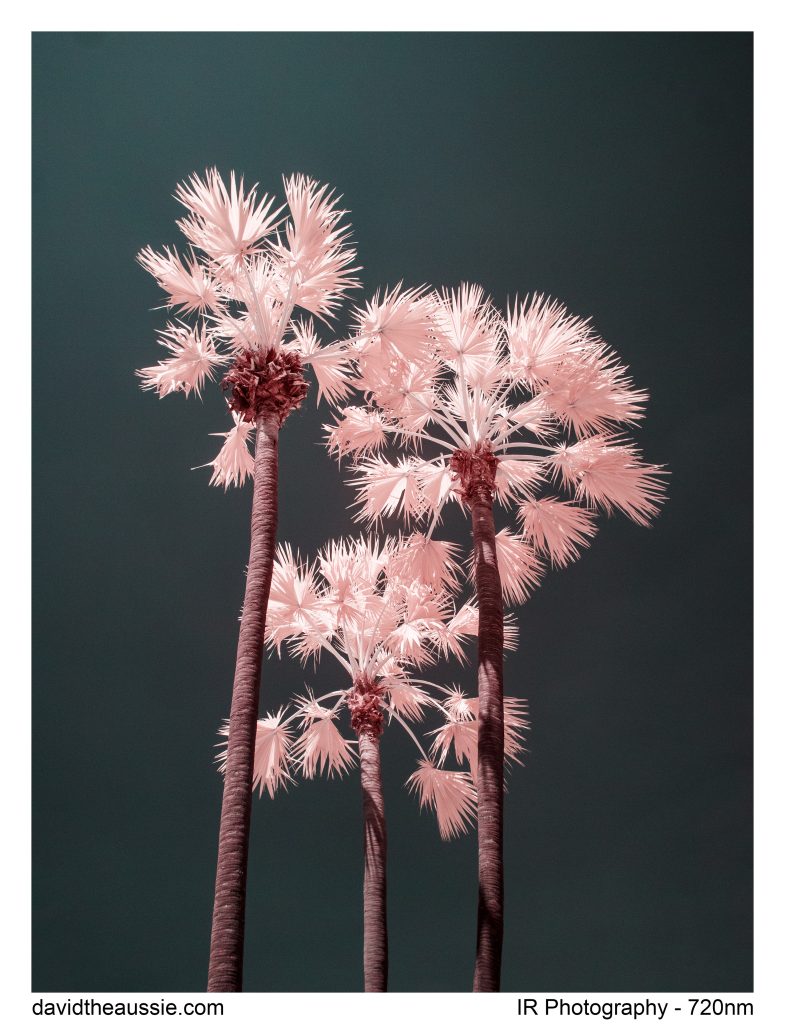
And shots like this really did seem so amazingly unique in the way that they create an appealing composition … sometimes the kind of composition that’s not able to be created in other photography styles. One commenter on my photo above said they look like dandeions, while they’re actually palm trees. I love the final result.
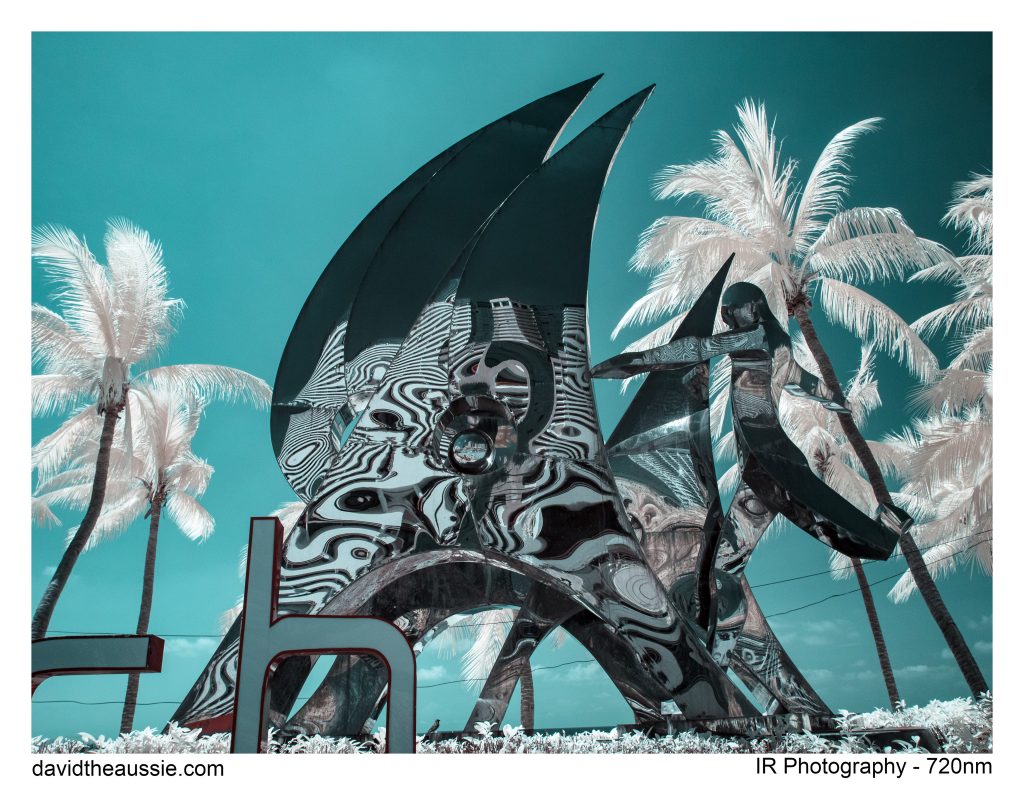
This is a favourite too, with the fascinating way the IR light plays a role in the palm trees, sky, and reflections off the mirror surface of the sculpture.

This one, an old guy asleep in a hammock, felt so right with the pink and red hues, with the occasional blue sky poking trhough the background.
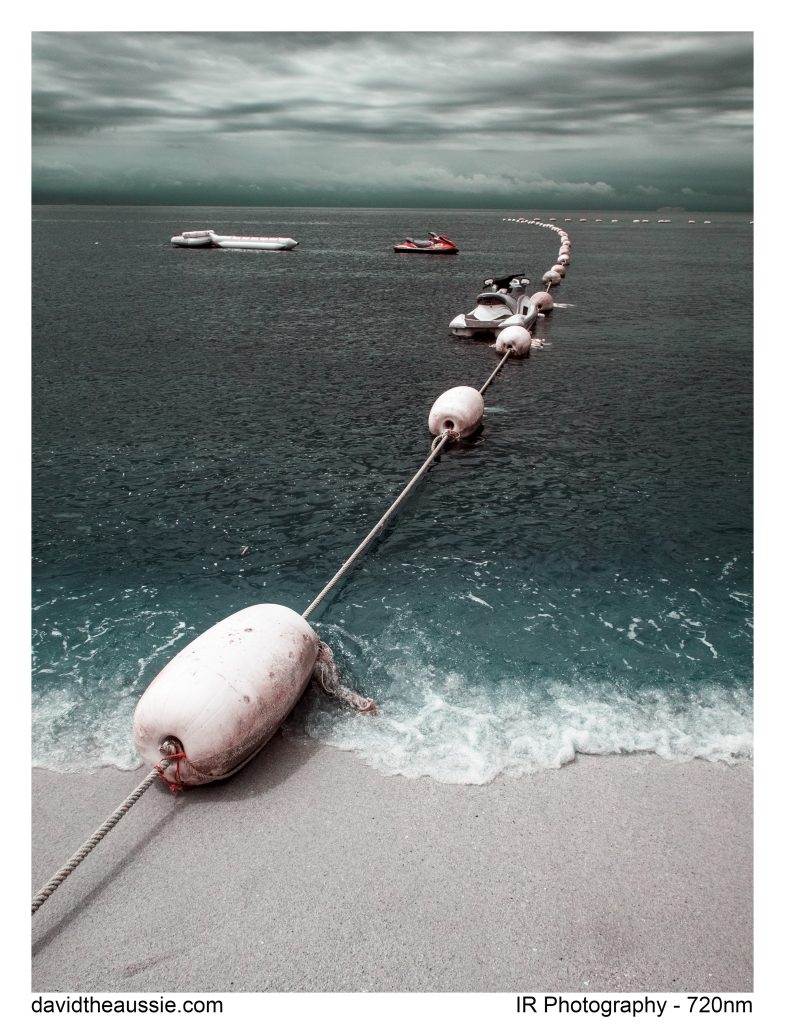
I did enoy the effect that the IR camera had on the ocean, making it so dark and mysterious. Contrast this with the super sharp clarity of the water breaking on the beach, the floats, boats and markers in the water creating a dotted line and finally the sky in all its storm cloudy glory … an hour later the sky opened up and it rained like mad.

But still. I was also absolutely anamoured with the high contrast black and white images that the higher IR filter (850nm) produced.
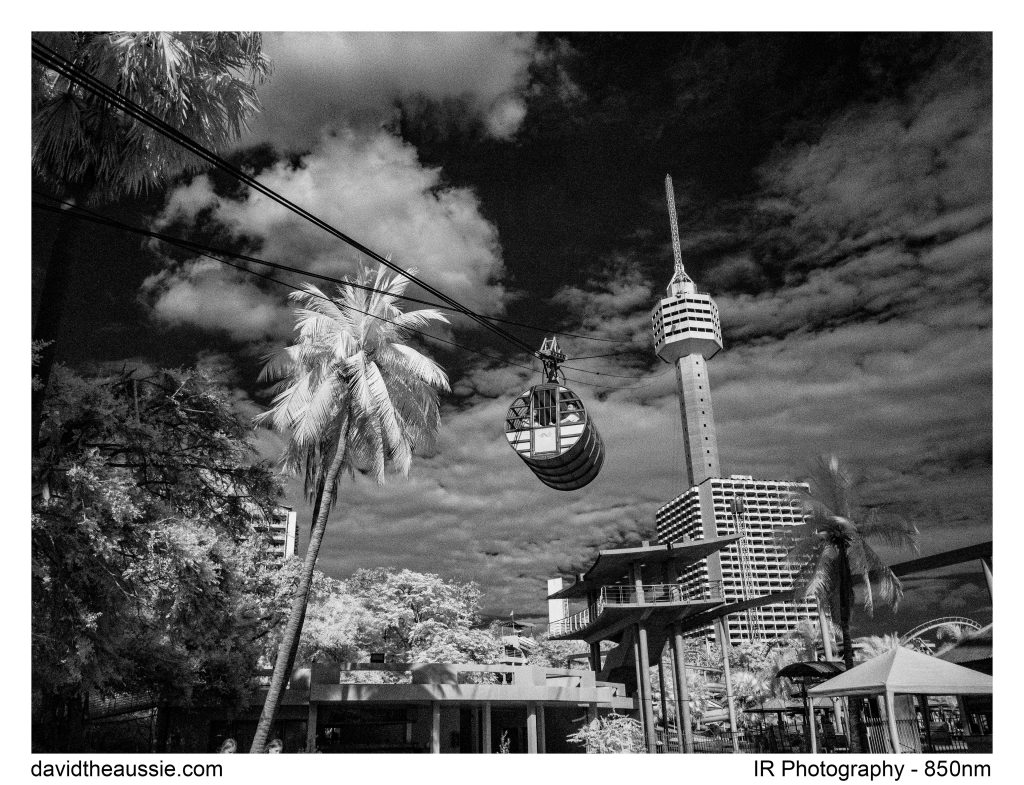
Speaking of anamoured, there was a tower in Jomtien (Jomtien Tower – go figure!) that I photographed often. I think this shot worked the best. The tower has a cable car that goes up to the very top where there’s a restaurant. I didn’t actually go up this trip, but I’m thinking now that the vantage point would be worth it … so would the nice food they serve up there. But that gives me something to do next time!
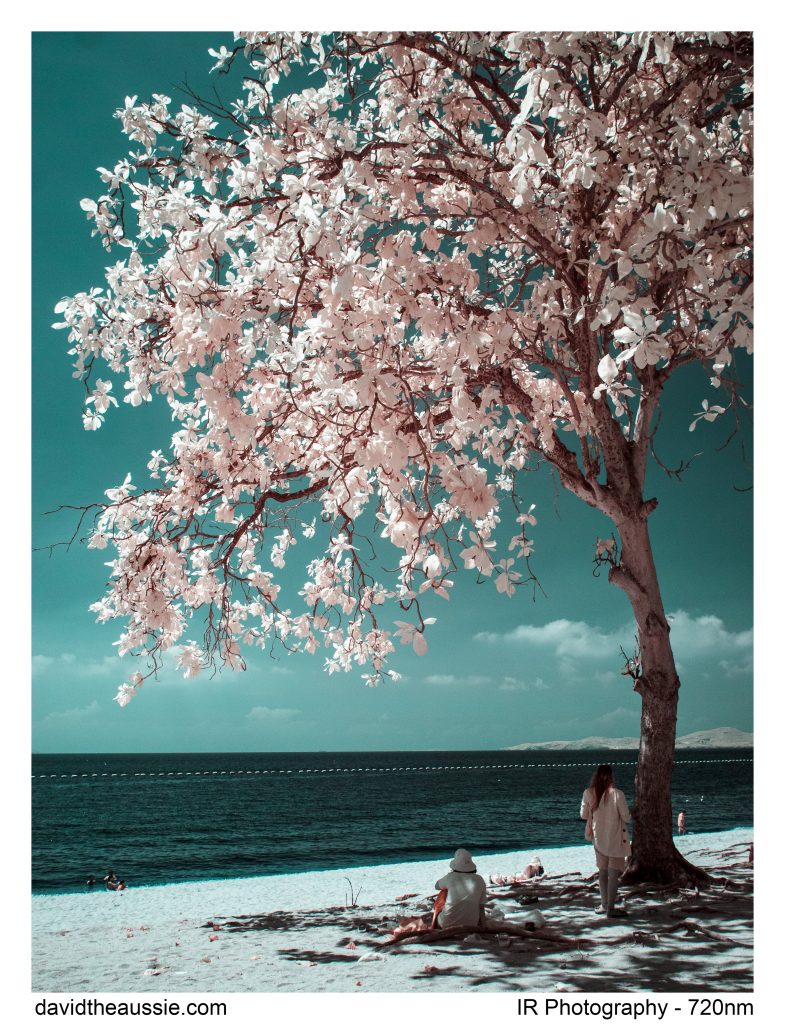
I’ve always loved black and white photography, but the pink and blue colours in the IR photos really grabbed me. It’s such a fun way to see the world and creates unique compositions.
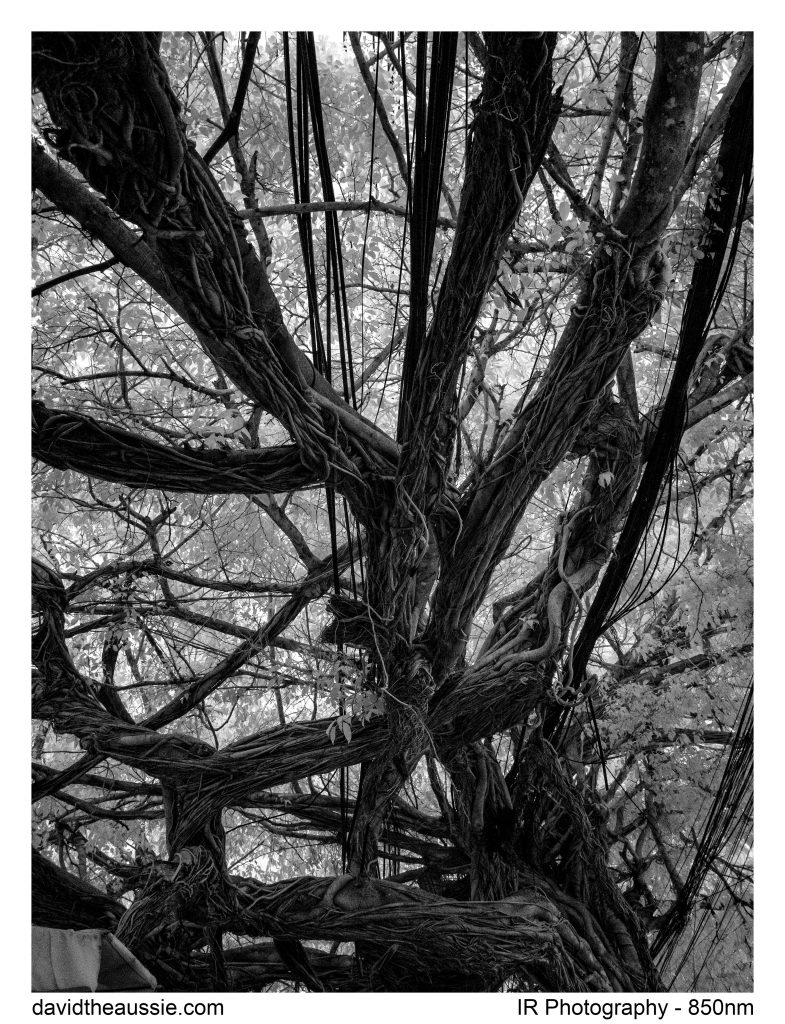
And I love the chaos. I was sitting in a cafe having a nice iced coffee (it was soooo hot in Thailand!). I do a lot of people watching and am always looking for interesting things to shoot. It’s half street photography, half ‘slice of life’ photography that I often find myself shooting. I do mix in portraits, landscapes or whatever else I feel like, but I am very reluctant to tie myself down to a particular photographic ‘style’. As I sat there I looked up and saw this gnarled tree with vines all over it. Coupled with the trees in the background and the mess of electrical cables, I thought it was a brilliant composition.
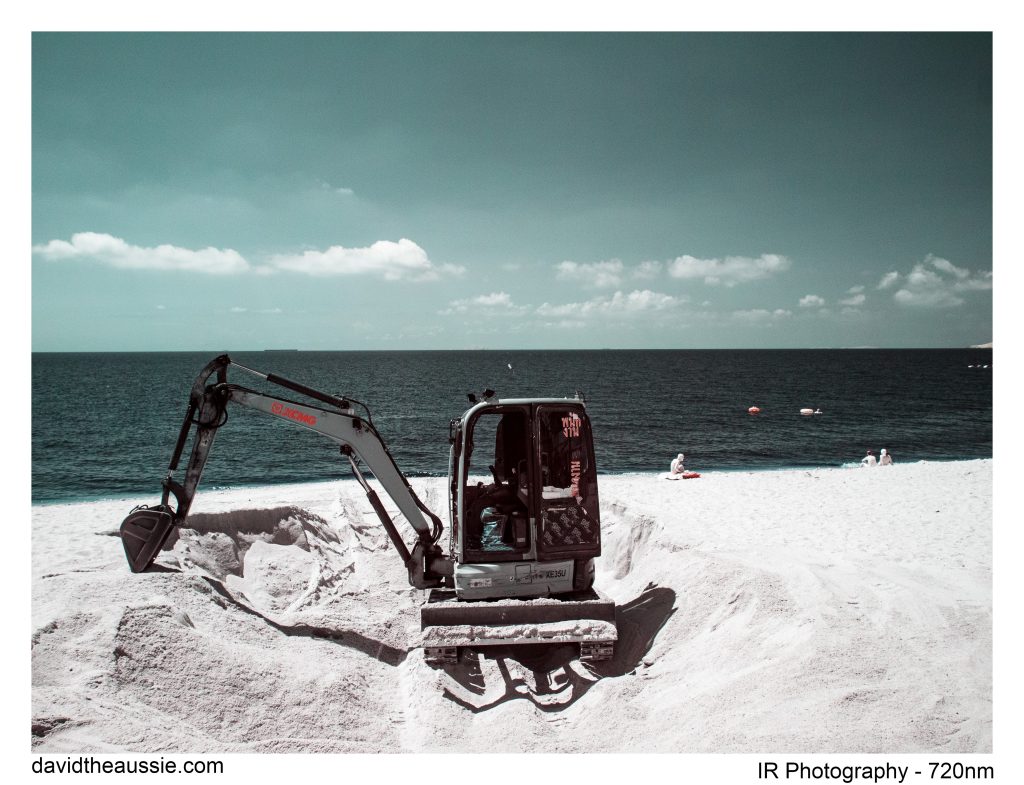
A digger. On the beach. Why not!
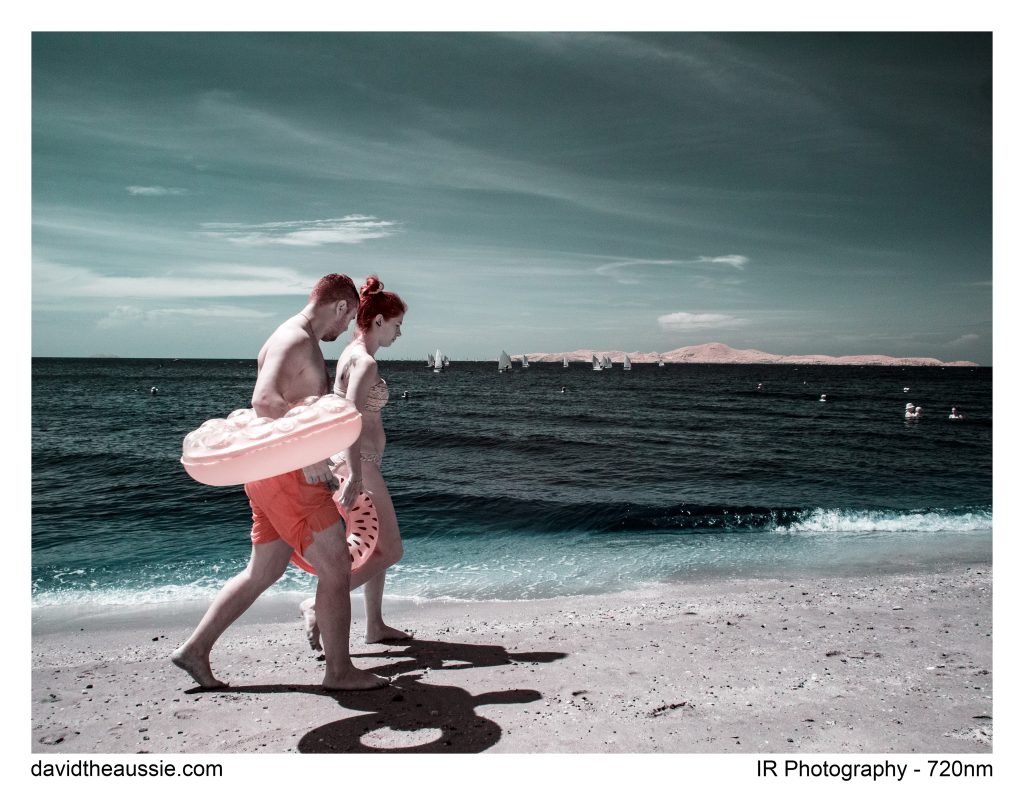
I stood for ages hoping that the catamarans doing their lessons would get closer, but it wasn’t to be. I still love this composition though.
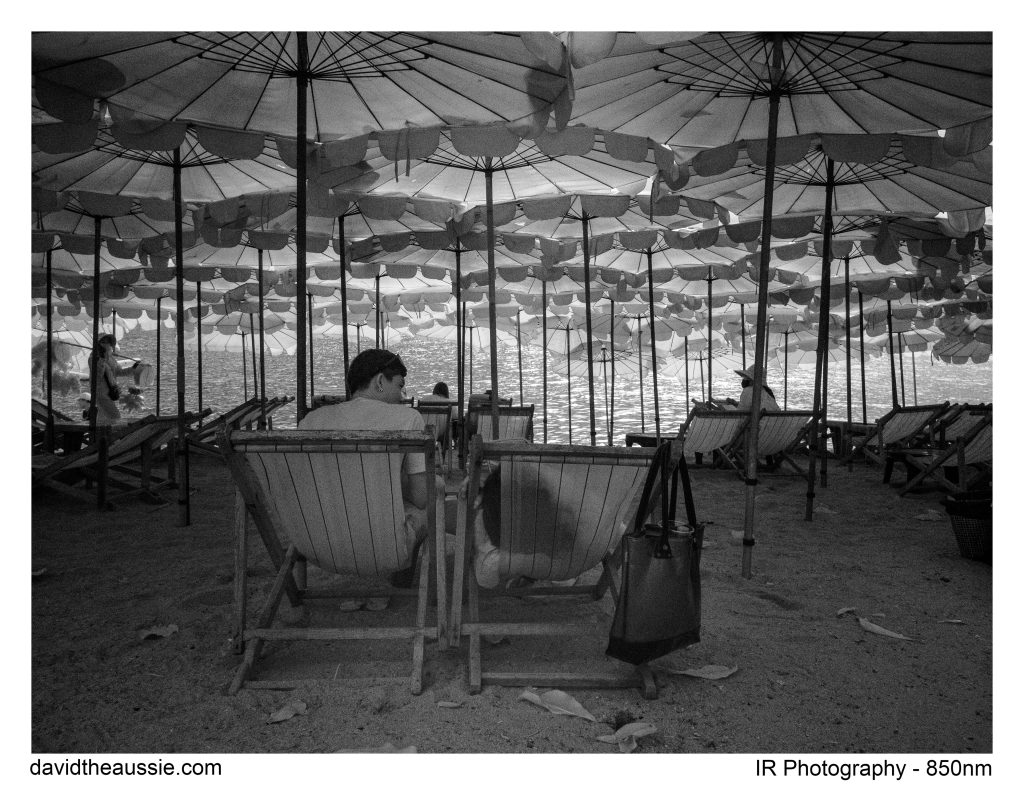
The whole reason I got into IR photography was to push my black and white images to a more interesting level. Shots like this really made me happy, knowing how they would come out when edited.
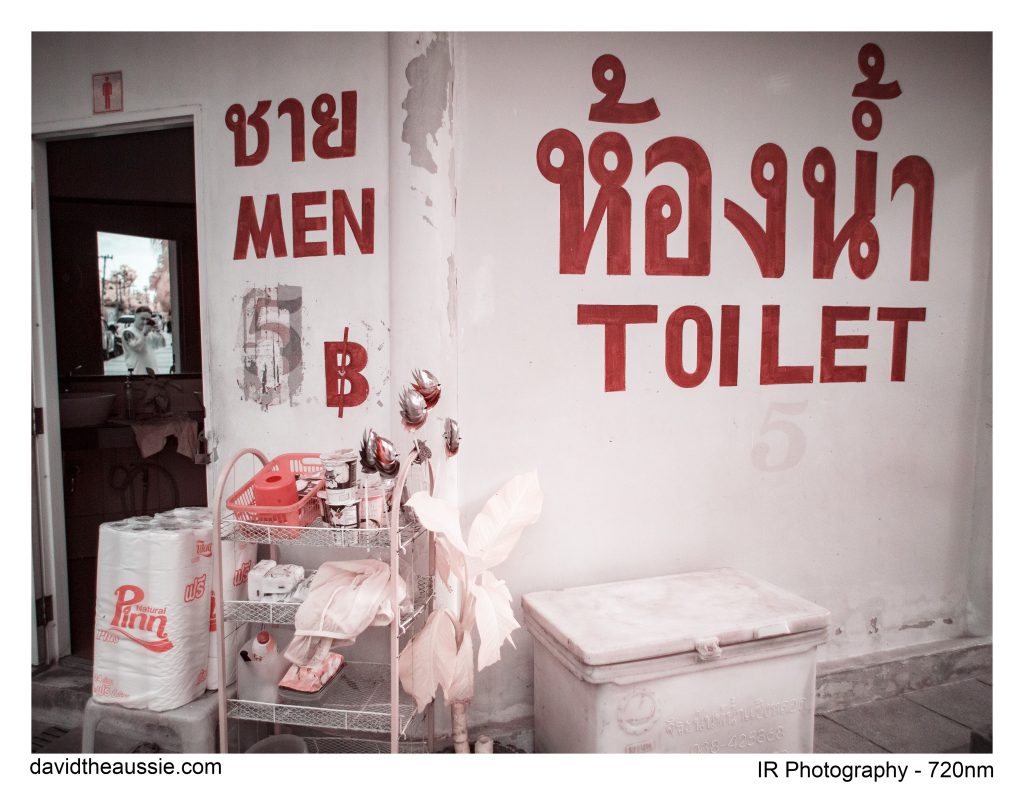
In the real world, most of the signage here is blue. Sneaky self-portrait.
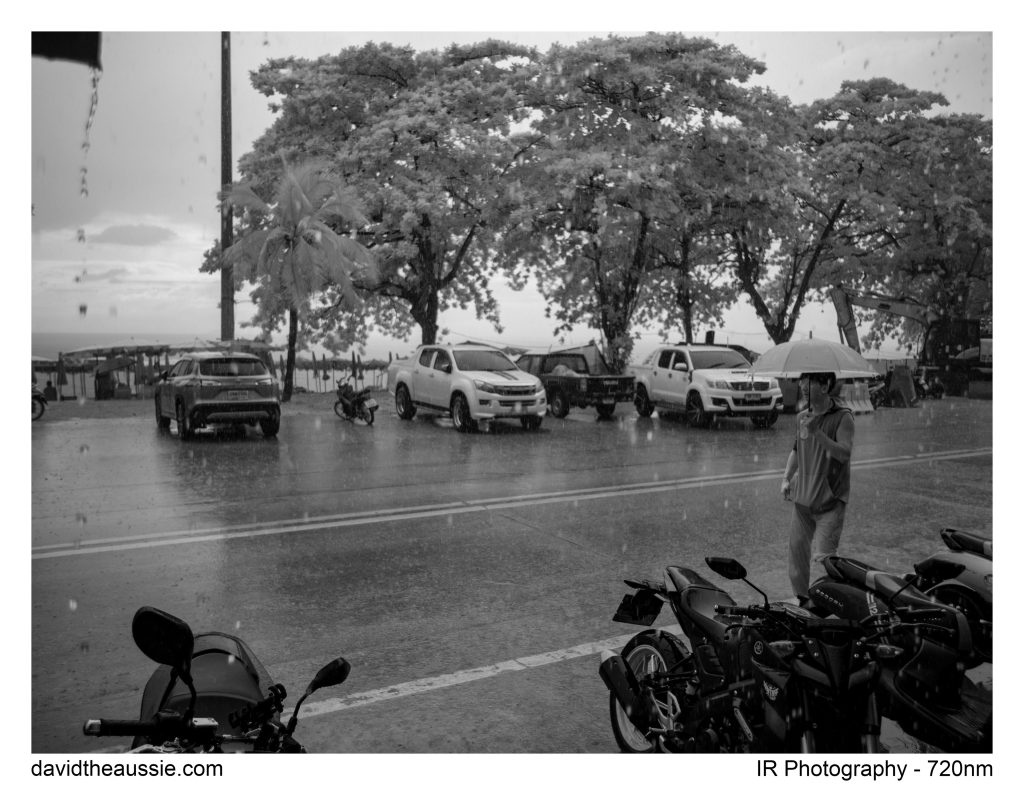
I’m only happy when it rains. Not really, but it’s a great song. It does rain a lot in Thailand, especially during monsoon season. The best thing to do is settle in a cafe and do some people watching.
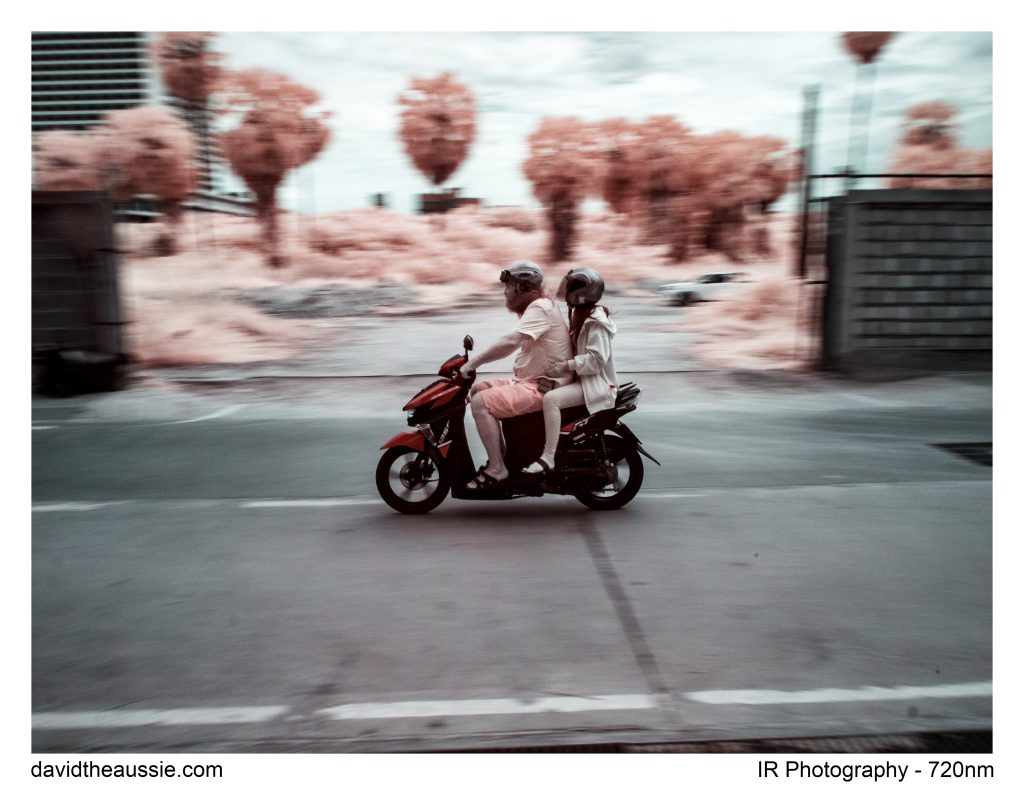
Tracking shot. The farang and his girl zoom by on a scooter. I took a few of these for fun and this one turned out the best.
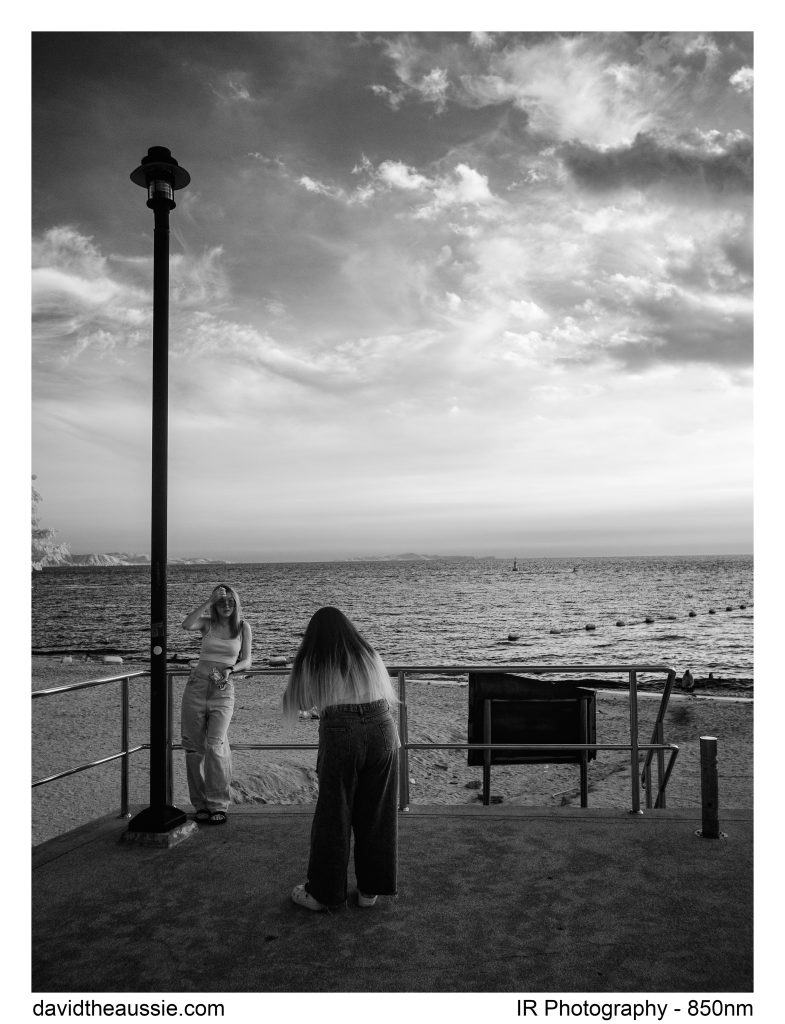
Serendipity. This was a very lucky shot and it turned out quite well I thought.
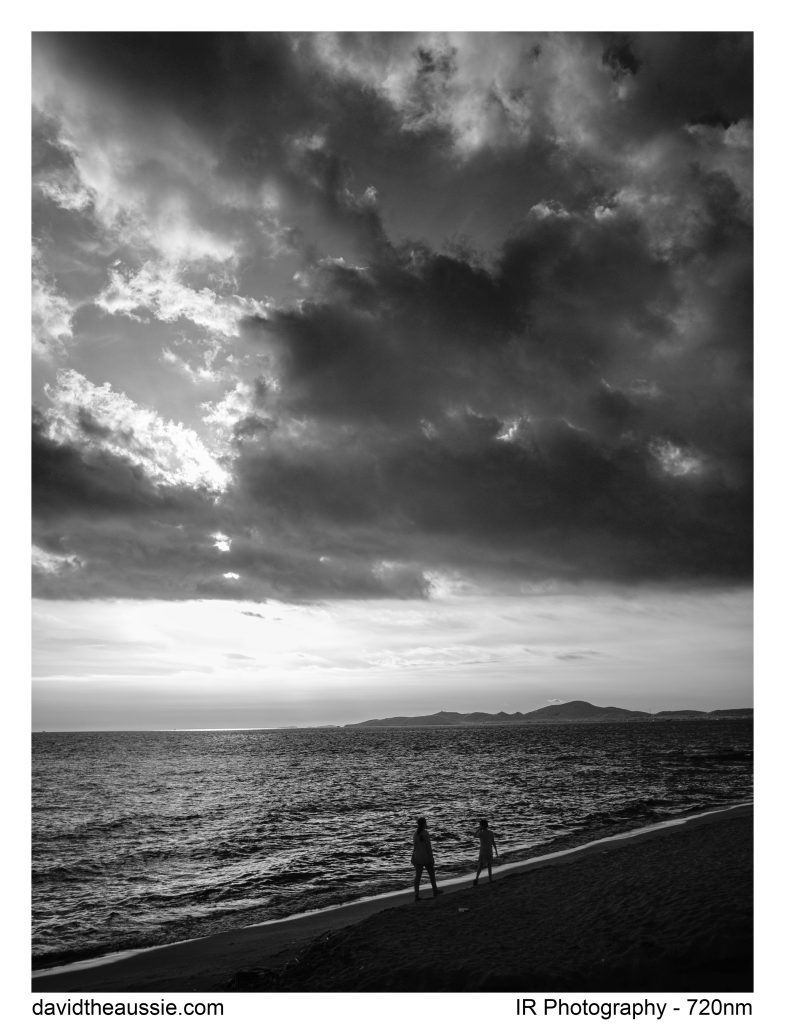
IR photography really does work for black and white. The clouds come out so beautifully. I generally prefer the 850nm filter for my B&W shots but I don’t switch filters during a shoot. So this time I had the 720nm filter on, but still got a great result. I guess I could nit pick the slight overexposure in the clouds, but I’m not bothered by it and it’s just too easy to be cynical instead of enjoying the process and embracing the lack of perfection as part of the creative journey.
That’s the majority of my IR photos for the trip. I did shoot regular photos with my Leica, but I really wanted to push myself to experience IR photography more fully, so I usually preferred to walk around with the Lumix and I often left the Leica at my hotel room. I don’t regret that decision.
So what’s my advice to people who are interested in IR photography? Just do it! I see a lot of people saying it’s great for bright conditions when regular photography would look flat or uninteresting, but I think it’s important to say that IR photography can work in ANY conditions. It’s a style of photography not limited to certain times of day. I was shooting in all conditions and all subjects and the photos came out really fun and some are amazing. I’m still a beginner with IR photography, but I have to admit that I’m hooked!